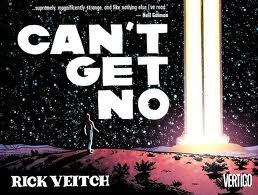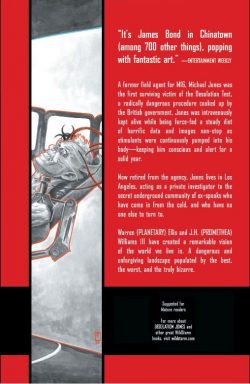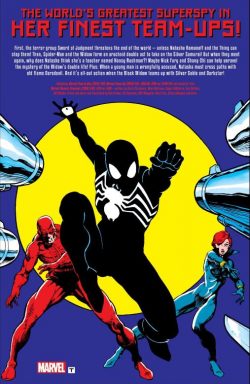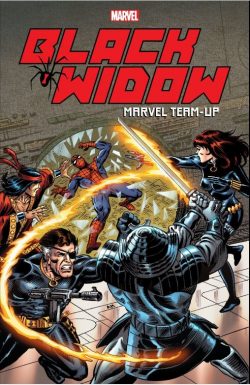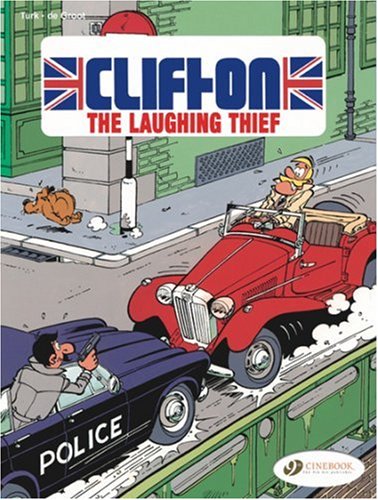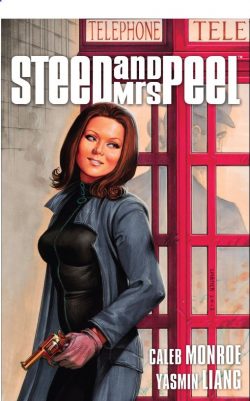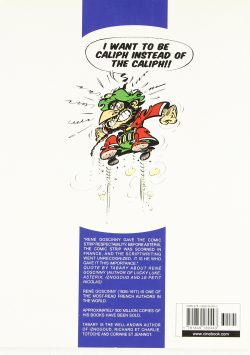

By Goscinny and Tabary (Cinebook)
ISBN: 978-1-84918- 044-3 (Album PB)
For the greater part of his too-short lifetime (1926-1977), René Goscinny was one of the most prolific and most-read writers of comic strips the world has ever seen. He still is.
Among his most popular comic collaborations are Lucky Luke, Le Petit Nicolas and, of course Asterix the Gaul, but there were so many others, such as the dazzling, dark deeds of a dastardly usurper whose dreams of diabolical skulduggery perpetually proved to be ultimately no more than castles in the sand…
Scant years after the Suez crisis, the French returned to the hotly contested deserts as Goscinny teamed with sublimely gifted Swedish émigré Jean Tabary (1930-2011) – who numbered Richard et Charlie, Grabadu et Gabaliouchtou, Totoche, Corinne et Jeannot and Valentin le Vagabond amongst his hit strips – to detail the innocuous history of imbecilic Arabian (im)potentate Haroun el-Poussah. However, it was the strip’s villainous foil, power-hungry vizier Iznogoud who stole the show – possibly the conniving imp’s only successful coup.
Les Aventures du Calife Haroun el Poussah was created for Record; with the first episode appearing in the January 15th1962 issue. A minor hit, it subsequently jumped ship to Pilote – a comics magazine created and edited by Goscinny – artfully refashioned into a starring vehicle for the devious ratbag who had increasingly been hogging all the laughs and limelight.
Like all great storytelling, Iznogoud works on many levels: as a comedic romp with adorably wicked baddies invariably hoisted on their own petards and coming a-cropper for the youngsters, whilst older, wiser heads revelled in the pun-filled, witty satire of marvellously accessible episodic comic capers.
The same magic formula had made its more famous cousin Asterix a global success, and just like the saga of the indomitable Gaul, this irresistibly addictive Arabian nitwit is adapted by master translators Anthea Bell & Derek Hockridge who made those Roman Follies so very palatable to the English tongue.
Moreover, the deliciously malicious whimsy is always heavily laden with manic absurdity and brilliantly delivered creative anachronism which keeps the assorted escapades bizarrely fresh and inventive.
Insidious antihero Iznogoud is Grand Vizier to affable, easy-going Haroun Al Plassid, Caliph of Ancient Baghdad, but the sneaky little toad has loftier ambitions, or as he is always declaiming “I want to be Caliph instead of the Caliph!â€â€¦
The retooled series launched in Pilote in 1968, and soon became a massive European hit, with 30 albums to date (carried on by Tabary’s children Stéphane, Muriel and Nicolas); his own solo comic, computer games, animated films, a TV cartoon show and even a live-action movie.
When Goscinny died in 1977 Tabary began scripting his own sublimely stylish tales (from 13th album onwards), switching to book-length complete adventures, rather than the compilations of short, punchy vignettes which typified the collaborations.
There haven’t been any new translated volumes since 2017, but this sixth Cinebook album (actually the ninth French album, released in 1973 as Le Tapis Magique) is now available in digital formats and opens with lead tale ‘The Magic Carpet’: an exceptional, extended 20-page epic bolstered by a triumvirate of shorter yarns and prefaced as ever with a handy catch-up profile page of the unusual suspects…
It all starts in gloriously bustling Baghdad where the verminous Vizier unaccountably encounters a few famous faces (moonlighting from their day jobs in Le Journal de Tintin) before returning to plotting how to remove the gentle, isolated and very dim obstacle to power …
It’s the birthday of corpulent oaf Haroun Al Plassid and a nasty notion finally occurs: employing impecunious Fakir Khaledonyahn to make a very special kind of rug. Flying carpets are no big deal in the empire and the skies of Baghdad are crammed with them, but the Fakir’s are extraordinary…
They only travel one way. Anybody standing on one of these when the trigger word is pronounced takes a flight to who-knows-where and never returns…
Who-knows-where is actually Ancient Peking (you can say Beijing if you want) and soon the venerably inscrutable and imperturbable citizens there are having their legendary patience and implacability tested as rug after rug arrives because untrusting Iznogoud continually demands proof of concept before parting with cash. Meanwhile, the gullibly hapless Caliph can’t get the hang of the magic word his trusted advisor wants him to repeat…
This sharply convoluted pun-punctuated yarn is followed by a sneaky dose of inspired iniquity dubbed ‘Incognito’. The well-meaning Caliph has no idea of the dire depredations Iznogoud inflicts upon the populace in his name, or that his beloved people fear, despise and revile the Caliphate because of excessive taxes, prisons filled with tortured citizens and schools empty of children. When chimerically inquisitive Haroun Al Plassid decides to go out amongst the populace in all his regal splendour, he is disappointed and surprised to find the streets utterly deserted by the terrified common folk…
Asking his precious Iznogoud for advice, the Commander of the Faithful is then convinced to sneak out alone dressed as a common beggar. Unable to believe his luck, the venal Vizier quickly briefs bumbling, long-suffering crony Wa’at Alahfand orders the guards to throw into the deepest dungeon any beggars who approach the palace.
On his fact-finding mission, the shabby Caliph learns a lot he doesn’t like and determines to fix things as soon as he gets back. Unfortunately, being a newcomer in his own city he gets lost…
Soon Iznogoud is going insane with suspense. Al Plassid should be back and languishing in jail by now, but as long as he’s out there somewhere the coup cannot begin. Thus, the despot-in-waiting and his fatuous flunky are forced to disguise themselves as beggars, covertly creeping out into Baghdad to search for their missing lord.
In the meantime, the Caliph has the brilliant notion of asking for directions and shambles home just as the Guard is being changed. Nobody even notices the scruffy indigent who shambles back to his apartments and becomes again The Caliph. Down in the city the tired and frustrated plotters give up and head for home, just as the order to arrest all beggars becomes law…
Sheer broad slapstick-riddled farce is the secret ingredient of the perfectly paced saga of ‘The Tiger Hunt’ when Iznogoud convinces his boss to go for a low key safari – just him, the Vizier and faithful Wa’at Alahf, all armed with bows and blunt arrows – to bag the perfect bedside rug.
Typically, the murder plot goes hideously awry as a succession of hunters provide perfectly suitable, already skinned rugs to the happy ruler and the only living apex predators they can find are just not interested.
Forced to improvise, Iznogoud resorts to digging a huge pit, but whilst he’s at the bottom of it Haroun at last finds a way to really tick off a tiger – just before it tumbles into a great big hole in the ground…
The manic mirth concludes with ‘The Box of Souvenirs’ as a visitor from distant Nippon visits Baghdad with a strange device. Judoka Karate is a destitute tourist whose incredible hand-held cube can turn solid objects into two-dimensional pictures.
Instantly sensing an opportunity Iznogoud – after much spirited dickering – acquires the mystic souvenir-maker, but hasn’t fully considered the details. To turn a jug, jewel or Caliph into a black-&-white image, the object has to be the proper distance from the lens and the subject absolutely must keep completely still for a minute or two.
Confident he can cope, the Vizier has utterly underestimated the Caliph’s mayfly attention span and ingrained vanity which has led to large mirrors being placed all over the palace…
Just such witty, fast-paced hi-jinks and craftily crafted comedy set pieces have made this addictive series a household name in France where “Iznogoud†is common term for a certain type of politician: over-ambitious, unscrupulous – and frequently not that tall.
When first released in Britain in the 1970s (and again in 1996 as a periodical comic book) these tales made little impression, but this snappy, wonderfully beguiling strip deserves an appreciative audience among today’s more internationally aware, politically jaded comics-and-cartoon savvy Kids of All Ages…
Original edition © Editions TABARY 1991, by Goscinny & Tabary. All rights reserved. This edition published 2010 by Cinebook Ltd.
